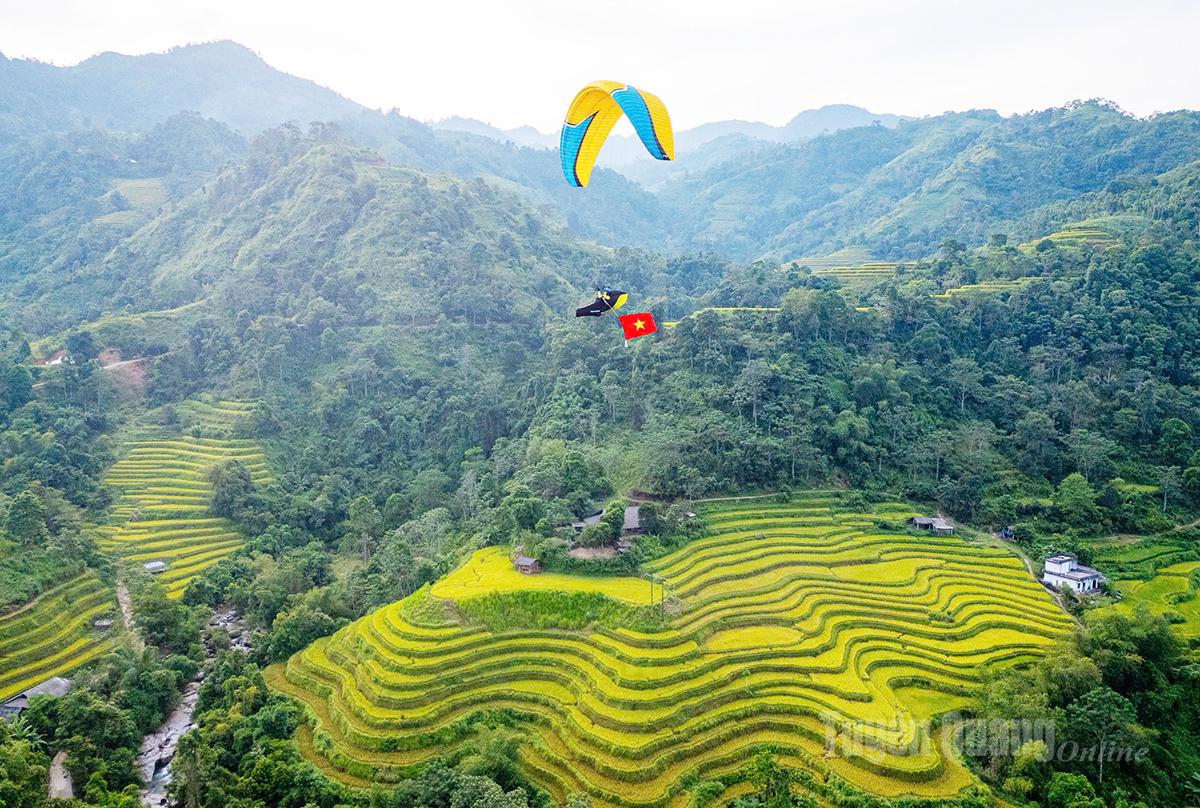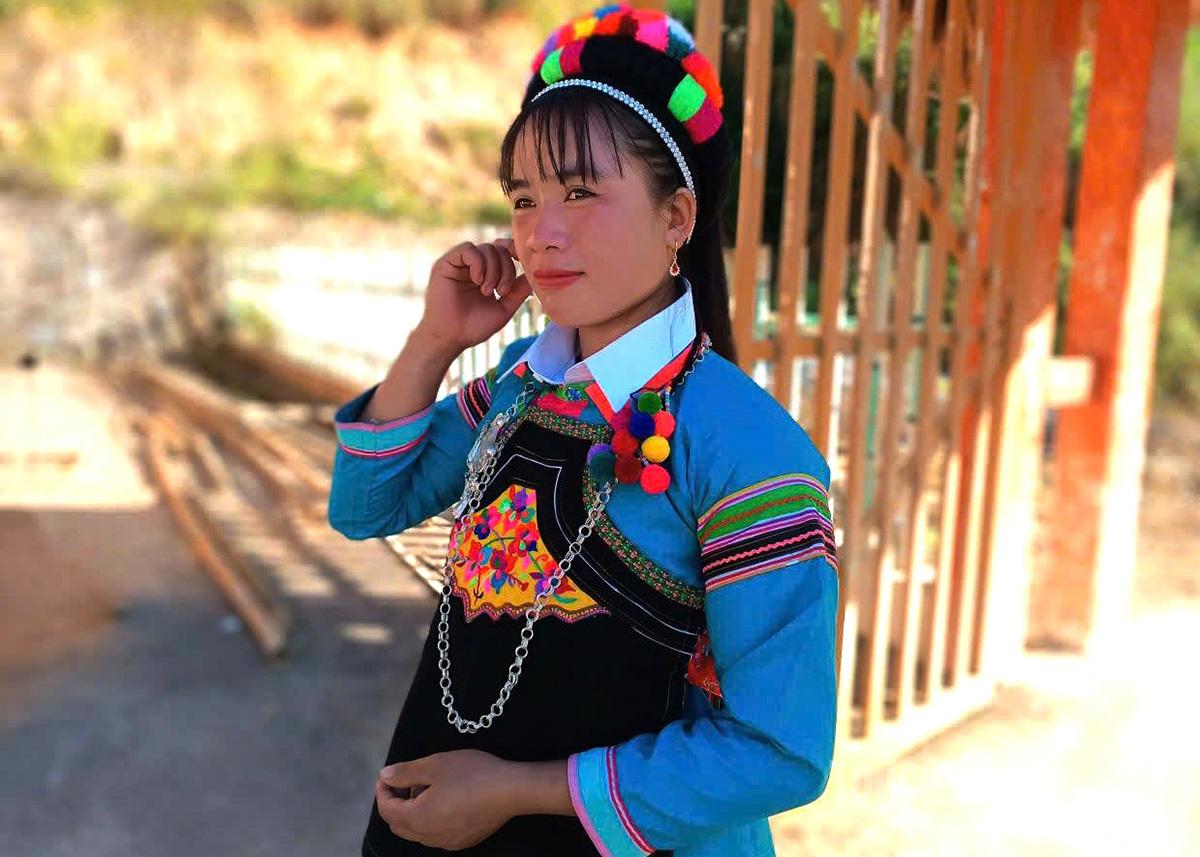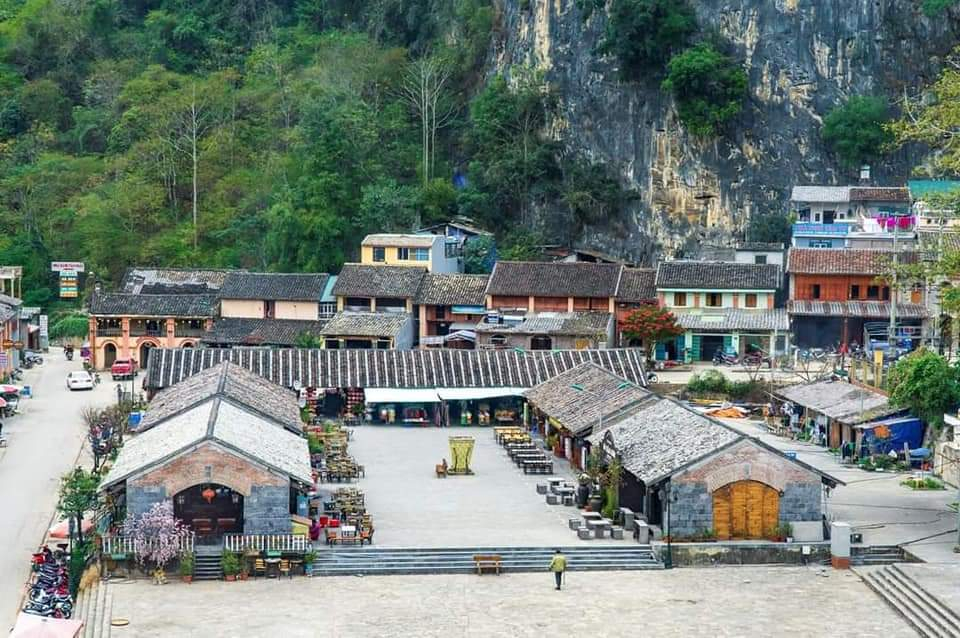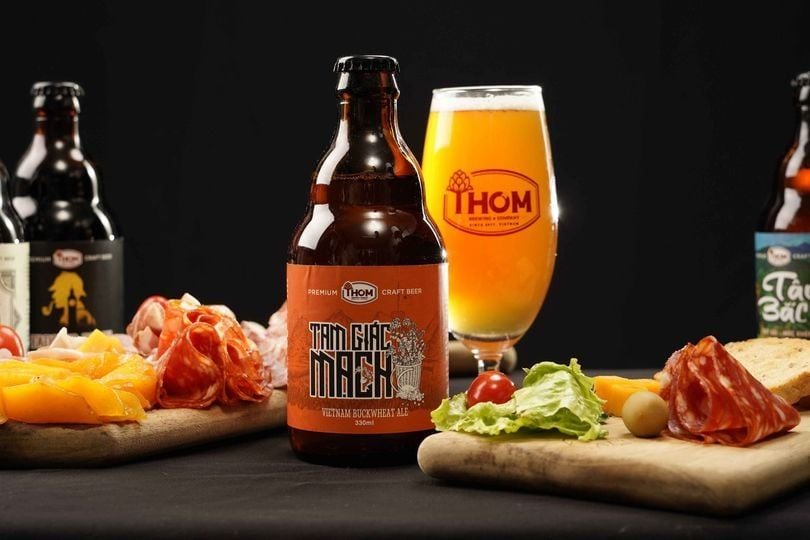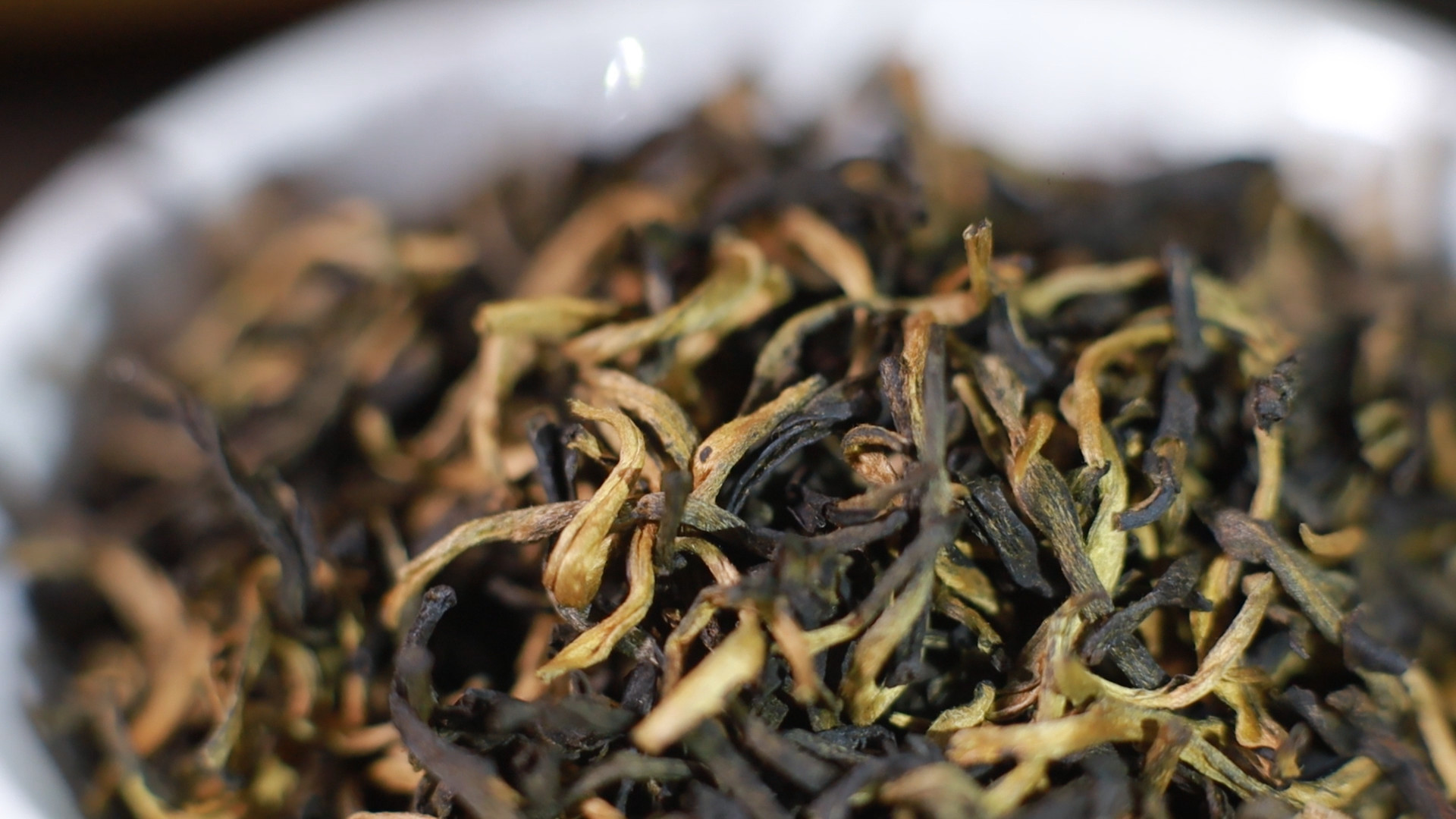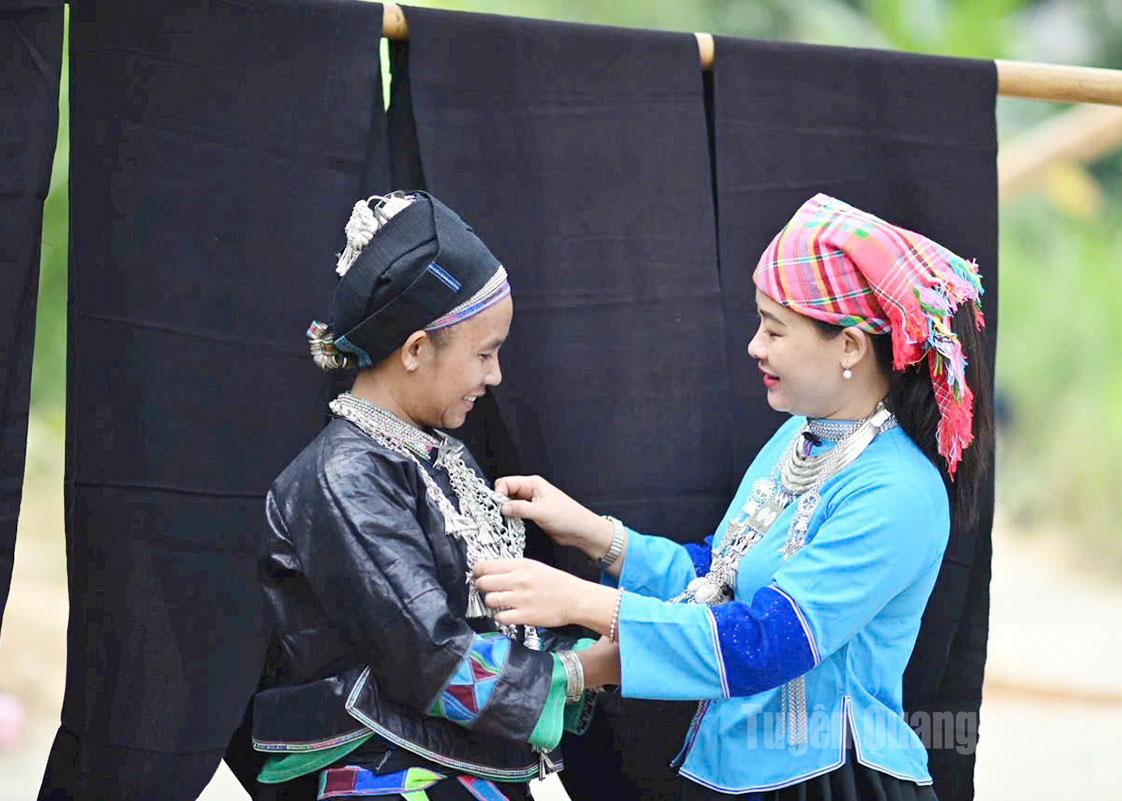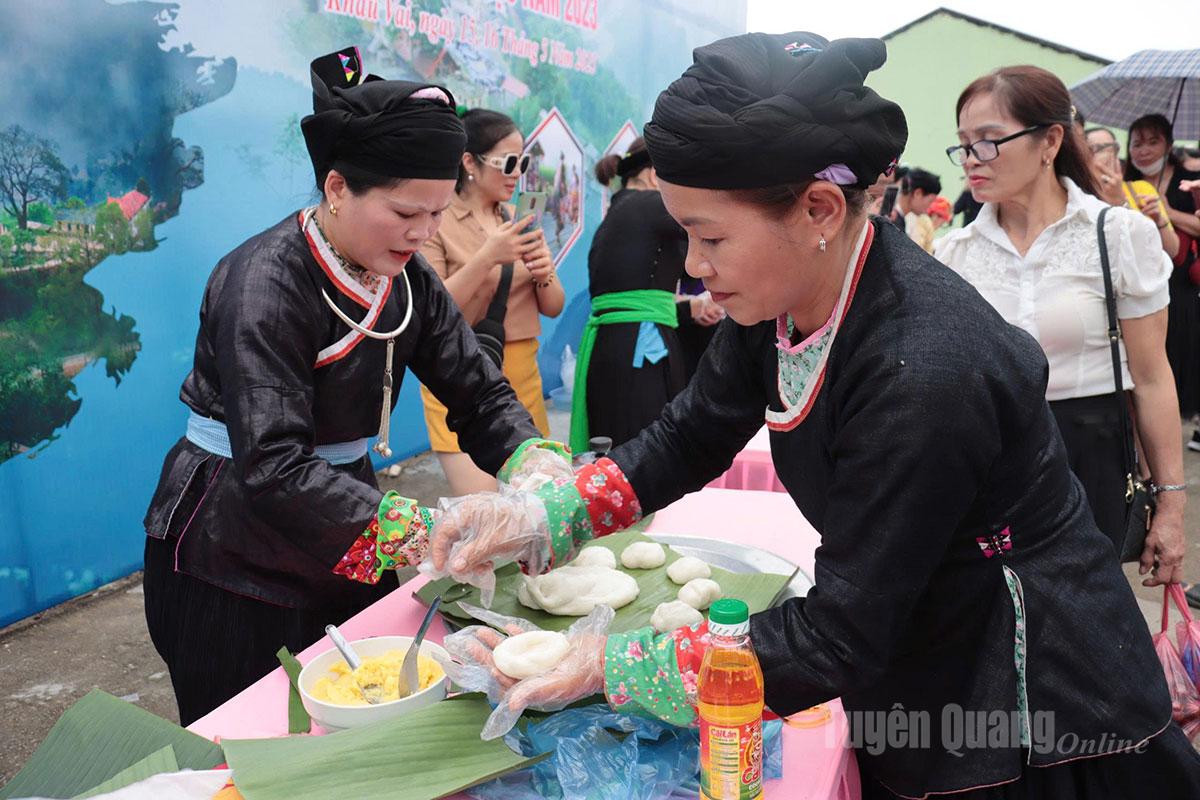
Giay women competing in a traditional cake-making contest during a local festival
Indigo - White - Red: Beauty in Simplicity
According to the 2019 Population and Housing Census, the Giay ethnic group numbers 67,858 people, accounting for about 0.07% of the national population. They are scattered across northern highland provinces, with over 50% residing in Lao Cai, followed by the area now merged into the new Tuyen Quang province, along with smaller communities in Lai Chau and Cao Bang. In regions where they live in close-knit communities, the Giay have cultivated a distinct cultural identity that enriches the diverse cultural mosaic of the northern highlands.
At first glance, Giay clothing may resemble that of the Tay. However, upon closer inspection, one sees the refined craftsmanship in every stitch. Giay women typically wear a plain indigo round-neck blouse, split at the chest and unadorned with elaborate embroidery. On this simple background, modest accents stand out: A white chest apron, a red waistband, and a neatly folded headscarf. The colors are not vivid, but harmonious and soft, creating a graceful, modest charm unique to highland women.
Not only worn in daily life, this traditional attire is also an essential part of major cultural events such as the Long Tong festival, the New Year forest ritual, weddings, and coming-of-age ceremonies. In many Giay villages, the indigo outfit is passed down from mother to daughter as a sacred heirloom.
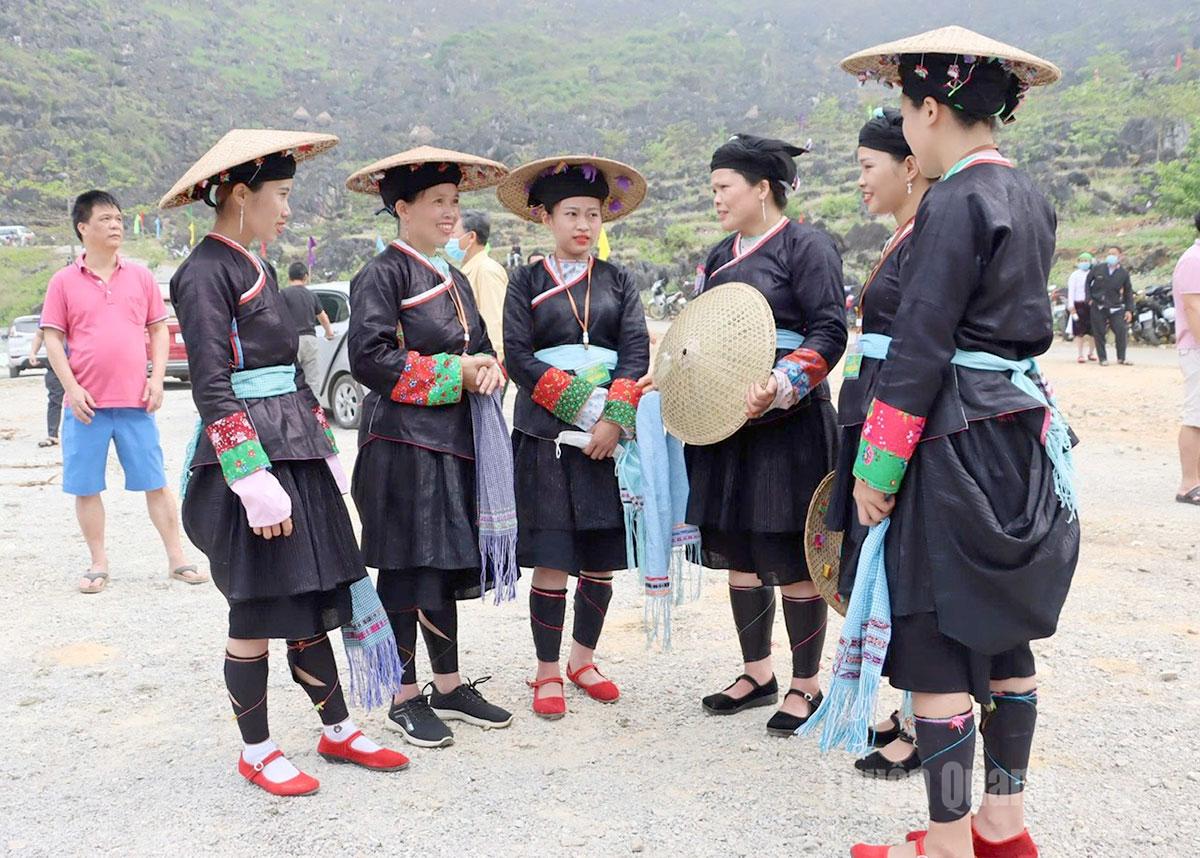
Giay girls radiate joy in traditional festival attire
Keeping the Threads, Keeping the Village
The Giay’s weaving and embroidery skills have been passed down through generations. From flax and cotton, Giay women spin thread, weave fabric, and dye it using forest leaves. They do not need to sketch patterns - rather, they embroider from memory, from images etched deep in their minds since childhood springs.
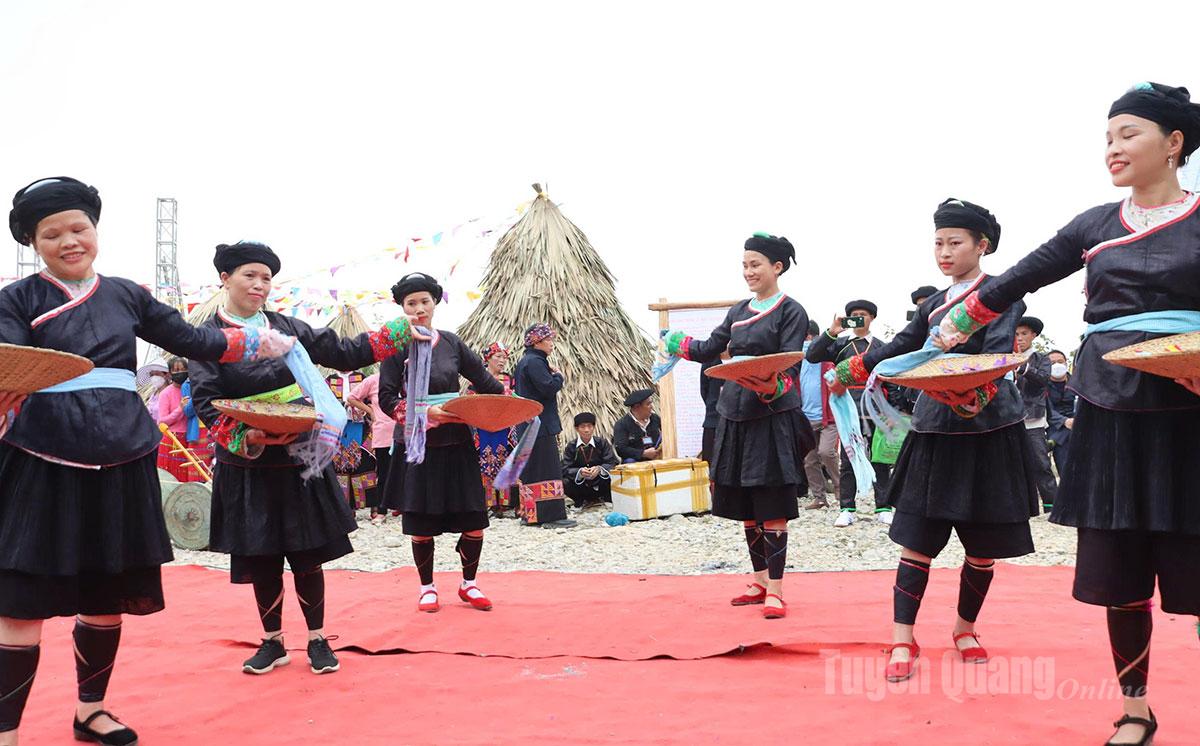
A graceful Giay dance lights up a highland celebration
Mai Thi Sinh, 67, from Chiem Hoa Commune, Tuyen Quang, recalled, “My mother taught me to sew when I was just five. Now I’m teaching my granddaughter the same way. I just hope she cherishes the craft and feels pride in our traditional dress. The indigo outfit may not sparkle, but it has soul - it's the result of our family’s effort and memory.”
Today, in villages like Na Tong, Ban Bien, and Phu Luu, many Giay women have formed weaving groups, producing souvenirs and decorative items for tourists. Local homestays actively promote Giay traditions, from cuisine and ‘phuon’ folk songs to try-on sessions, photoshoots, and hands-on weaving experiences. These experiences not only distinguish highland tourism but also empower locals to preserve their identity right where they live.
Stitching a Path Toward the Future
In many localities, Party committees and authorities are working to establish cultural spaces for the Giay people right within their villages. These spaces feature the clack of looms, soulful ‘phuon’ melodies, and indigo garments steeped in meaning - breathing life into vibrant community spirit. Preserving culture is not just about safeguarding the past; it is a key to unlocking community-based tourism that is sustainable and meaningful.
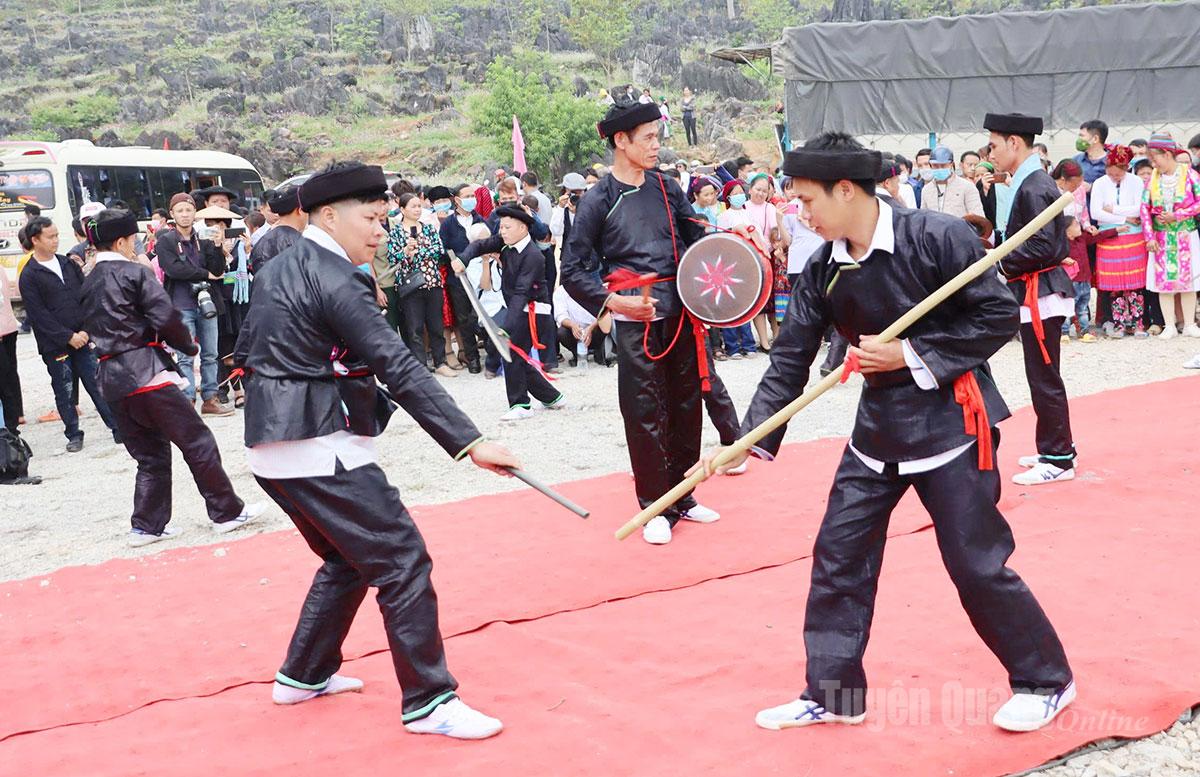
Giay men performing a martial folk dance
Despite modern pressures, many Giay individuals have thrived and become commune, district, or provincial officials. They remain rooted in their heritage and continue to wear traditional clothing as an inseparable part of their identity. From a mother’s humble indigo blouse and the loom by the stilt-house porch, a new generation is carrying forward the legacy - protecting and elevating traditional values into the future.
Without fanfare, the Giay’s traditional costume speaks volumes – a quiet yet powerful emblem of cultural pride, seen in daily life, on mountain paths, and on festive stages. Within that indigo fabric lies not only thread and embroidery - but also history, culture, pride, and the determination to preserve identity in a region forging ahead with green, sustainable, and human-centered tourism.
Nguyen Thanh Hieu
Vietnamese data source: Bao Tuyen Quang

